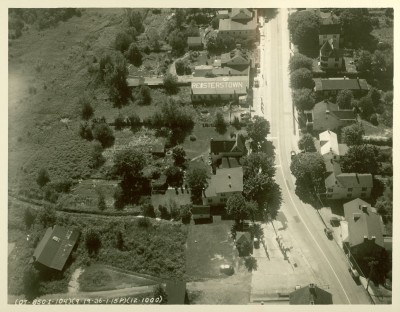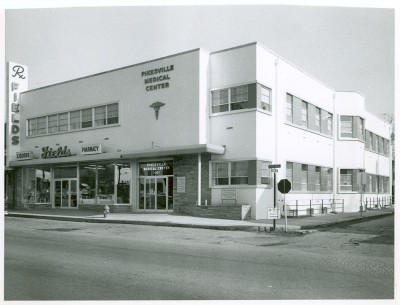Baltimore’s Suburban Story

 A blog post by Summer Intern Laura Tomes.
A blog post by Summer Intern Laura Tomes.
For the past two months, I have been doing the preliminary research for a new exhibit on suburbia and nostalgia in Baltimore from 1950-1980. In the course of my reading, I have discovered that suburbia is a slippery concept. Everybody knows what suburbs are, but no-one agrees quite how to define them. Jewish suburbia is even harder to pin down. What are the Jewish suburbs of Baltimore? The Northwest, of course! Pikesville, Owings Mills and Reisterstown. Once we could include Randallstown in that list too. But how and when did they become Jewish suburbs? The U.S. census does not ask questions about religious affiliation, so it is difficult to know how many Jews have historically lived in any given place at any given time. But, we can make some logical deductions.

The suburbs of Baltimore were not divided into census tracts until 1960. So to compare and contrast population growth before 1960, we have to look to a bigger unit of population measurement, one that has been used for a much longer period of time: the minor civil division. The area around Randallstown corresponds to minor civil division 2, the area around Pikesville corresponds to minor civil division 3, and the area around Owings Mills and Reisterstown corresponds to minor civil division 4. Looking at the population data from the census for these areas yields some interesting results. In 1940, the population for these three minor civil divisions numbered only around 7,000 people. By 1950, it had grown only by about 2-3,000. However, between 1950 and 1960, the population of these three areas grew to around 25,000 – an increase of more than double. Between 1960 and 1970, the population doubles again, increasing to between 30,000 and 50,000. By 1980, however, the population growth levels out, only increasing by 3-5,000 people.

So we can tell from this that 1950-1970 are clearly the most important years in the growth of Baltimore’s Jewish suburbs. Add to the population figures the fact that the Beltway was constructed between 1959 and 1962, and that the Social Security Administration headquarters were built in Woodlawn in 1960, and we begin to get a sense of why the suburbs of northwest Baltimore became convenient places to live and work in these decades. Indeed, we have found that many new housing developments were advertised in the Baltimore Jewish Times along Liberty and Reisterstown roads beginning in the early 1950’s, It is interesting, however that during the late 1960’s and early 1970’s, the real estate advertisements of the Baltimore Jewish times are full almost exclusively with adverts for apartment blocks being built in suburbs outside the Beltway. In addition, marriage announcements frequently include references to young couples beginning their married lives in suburban apartment complexes such as Scotts Level, Eton Hall, and Pikesville Plaza. So while suburban development began with housing development in the early 1950’s, it seems there was definitely a trend towards suburban apartment living amongst young Baltimore Jews during the 1960’s and 1970’s.

